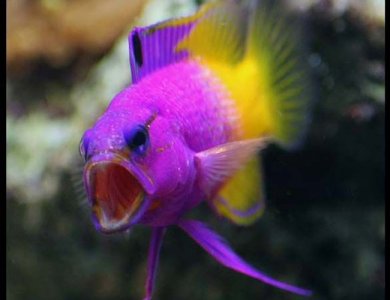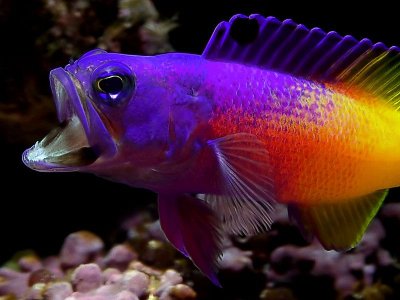ThRoewer
New member
I found this research paper which confirms what I had already suspected:
Bisexual juvenile gonad and gonochorism in the fairy basslet, Gramma loreto
To make it short: Gramma loreto doesn't change sex after maturing. The same can be assumed for G. dejongi and likely also for G. melacara. Individuals above 25 mm (1") have to be assumed to be set in their sex. It is not yet clear if specimens below that size are already set in their sex or if social interactions can determine the sex of an individual. To be on the safe side it is best to assume the sex is set until further research shows that juveniles still have a "choice".
I currently have a trio of Grammas that I got as fairly small individuals. Of those three two are males and one is female. The dominant male and the female spawn regularly. The subordinate male pretends to be a female towards the dominant male but shows mating behavior towards the female. He generally tries to avoid interactions with the dominant male.
The dominant male is significantly larger than the female and more slender in his body proportions.
I also noticed a coloration difference between males and females: adult males have silver speckles on some of their scales while these are completely absent with females. However, this may be difficult to spot in a fish store system.
The female and the subordinate male are of equal size and body proportions but show clear color and behavioral differences.
Since the sex ratio among small specimen favors females and because subordinate males are tolerated within a group, the easiest way to get a pair or a harem is to acquire 3 or more small specimens of equal size.
When going to pair adults size can be used as a primary indicator. Females stay significantly smaller (below 50 mm SL) than fully mature dominant males (larger than 50 mm SL). Dominant males also have longer ventral fins and a slimmer body.
However, the fact that subordinate males mimic females in size and body proportions makes it difficult to pick females by size. The above-mentioned coloration difference may help but may not be visible with stressed individuals at the store.
For those interested in breeding Gramma, this paper might be of interest:
Development of morphology and swimming in larvae of a coral-reef fish, the royal gramma, Gramma loreto
Bisexual juvenile gonad and gonochorism in the fairy basslet, Gramma loreto
To make it short: Gramma loreto doesn't change sex after maturing. The same can be assumed for G. dejongi and likely also for G. melacara. Individuals above 25 mm (1") have to be assumed to be set in their sex. It is not yet clear if specimens below that size are already set in their sex or if social interactions can determine the sex of an individual. To be on the safe side it is best to assume the sex is set until further research shows that juveniles still have a "choice".
I currently have a trio of Grammas that I got as fairly small individuals. Of those three two are males and one is female. The dominant male and the female spawn regularly. The subordinate male pretends to be a female towards the dominant male but shows mating behavior towards the female. He generally tries to avoid interactions with the dominant male.
The dominant male is significantly larger than the female and more slender in his body proportions.
I also noticed a coloration difference between males and females: adult males have silver speckles on some of their scales while these are completely absent with females. However, this may be difficult to spot in a fish store system.
The female and the subordinate male are of equal size and body proportions but show clear color and behavioral differences.
Since the sex ratio among small specimen favors females and because subordinate males are tolerated within a group, the easiest way to get a pair or a harem is to acquire 3 or more small specimens of equal size.
When going to pair adults size can be used as a primary indicator. Females stay significantly smaller (below 50 mm SL) than fully mature dominant males (larger than 50 mm SL). Dominant males also have longer ventral fins and a slimmer body.
However, the fact that subordinate males mimic females in size and body proportions makes it difficult to pick females by size. The above-mentioned coloration difference may help but may not be visible with stressed individuals at the store.
For those interested in breeding Gramma, this paper might be of interest:
Development of morphology and swimming in larvae of a coral-reef fish, the royal gramma, Gramma loreto



